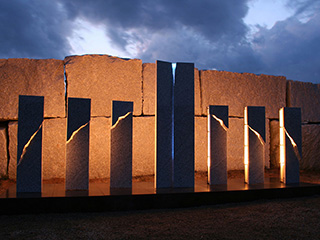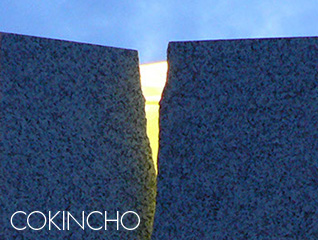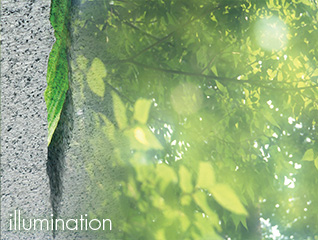Spiritual Light ®
COKINCHO
[Ichi-go ichi-e] - traditional japanese reception - layer of time meeting between people - be cordial on each moment - timeless space encounter aesthetic - cokin-cho

Size: H2000, W4500, D1200(mm) / 800kg * include a pedestal
Material: Inada stone, Steel, FRP
» Movie - illumination (06'57)
* The original video footage used for the illumination.
Explanation on [Ichi-go ichi-e]
Literally translated, “One Time, One Meeting,” Ichi-go ichi-e is a timeless Japanese cultural concept linked with Zen Buddhism and particularly associated with the Japanese Tea Ceremony. It is believed that this term was derived from the book, ‘The Tea Ceremony of the Lifetime’ by Souji Yamanoue, a disciple of Sen no Rikyu, the most revered Grand Tea Master of the Sengoku Era (16th Century).
In the tea ceremony, both the host and the guests are fully focused in the art of serving a cup of tea and act in the most flawless, polite and graceful manner possible as if it is the only given chance in their lifetime to participate in the ceremony; and by doing so, one pays full respect to each of the members and to appreciate the rare, ritualistic occasion with honesty.
And this notion of “one chance in a lifetime” or “never again” is the underlying spiritual basis of ‘Ichi-go ichi-e,’ which has been passed on from the past to the modern Japanese culture. However, in order to fully understand and appreciate the notion of ‘Ichi-go ichi-e,’ it is best encouraged to practice and experience the tea ceremony.
Although very Japanese in nature, the concept of ‘Ichi-go ichi-e’ could be adopted by the people of different cultures as well; if we could all share this concept together, perhaps our perception of the world or how we view ‘other people’ may alter and widen our senses.
[Cokin-cho]
Literally translated, “the past and the present crossing over.” This work suggests the dynamic crossing point where the beam from the past and the beam shooting to the future meet.
During the Hei-an Era (8th to 12th Cetury) in Japan, ‘Juni-hitoe,’ an extremely elegant and highly complex kimono was worn by court-ladies. Literally translated, “the twelve-layer robe,” the ladies enjoyed the arrangements of the layers and their colors. The arrangements of the layers and their colors were a good indication to any outsider what taste and what rank the lady had.

